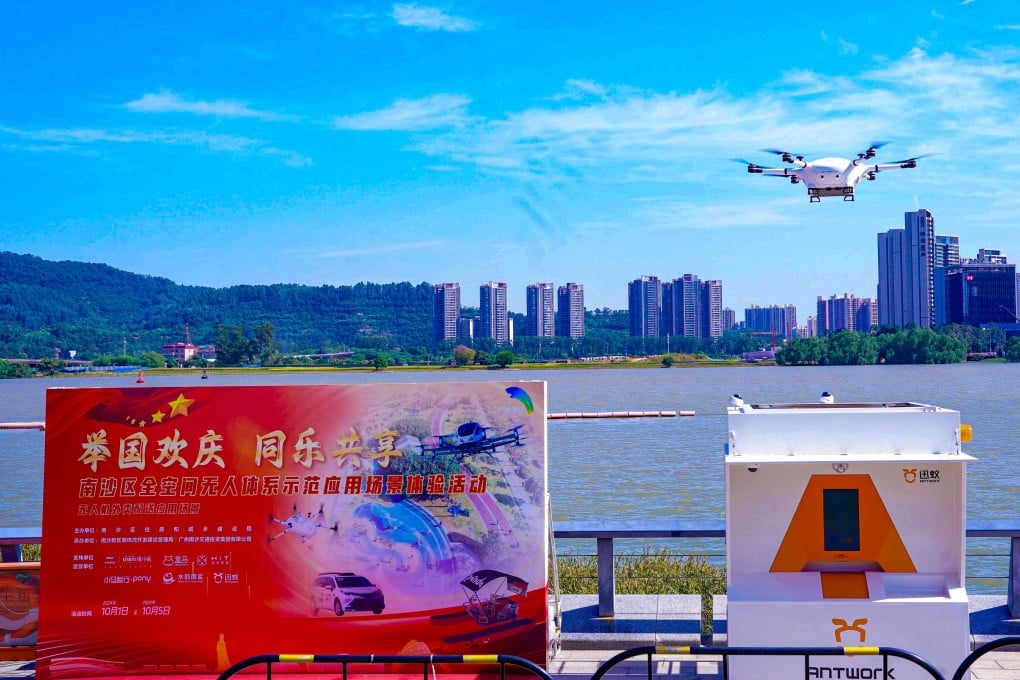How high can the low-altitude economy soar as US, China battle for supremacy?
Low-altitude economy is seen a new growth engine for China, highlighted by demonstrations during the recent week-long National Day holiday

It is no coincidence that Nansha, a district in Guangdong province’s capital city of Guangzhou, chose to showcase China’s advances in drones, electric vertical take-off and landing (eVTOL) aircraft and unmanned boat technology during the week-long National Day holiday.
Dozens of companies around the world are betting on eVTOL aircraft amid increasing competition between China and the United States to make air travel in urban areas more accessible, although neither have begun commercial operations.
China, which is the global leader in battery technology, is seeking to emulate its success in electric vehicles with air taxis by making eVTOL aircraft more affordable, with business travel and tourism seen as potential growth areas.
“Right now, the battery amortisation cost is the largest contributor to the hourly operating cost of eVTOL aircraft,” said James Wang, a professor at the School of Mechanical and Aerospace Engineering within Singapore’s Nanyang Technological University.
“[This is] because the battery must be replaced after hundreds of full charge cycles, and an eVTOL requires a lot of rechargeable batteries.”
